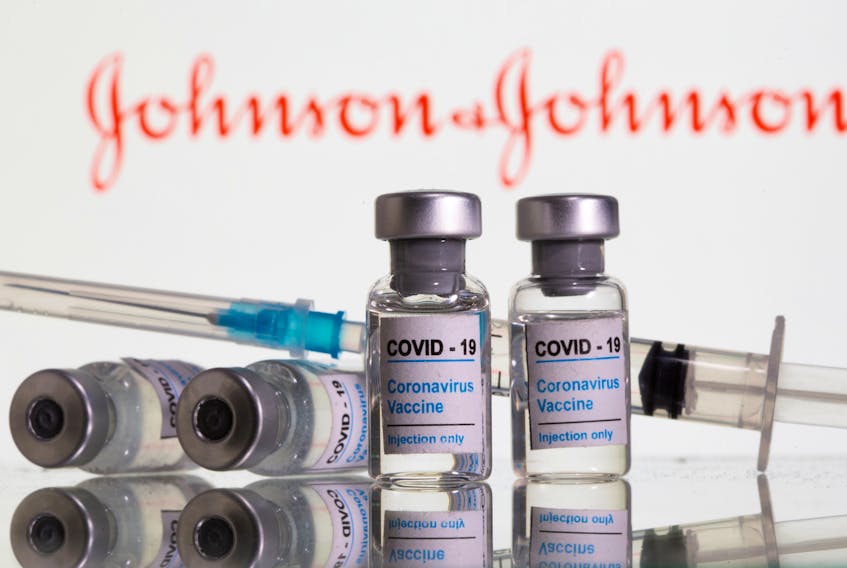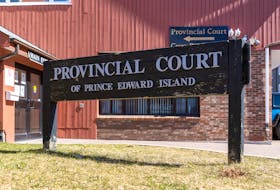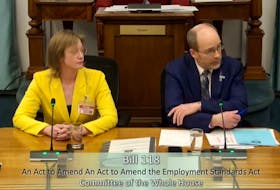As of 10:32 a.m. Friday, 2,225,238 doses of a Covid-19 vaccine had been delivered into the arms of Canadians.
That’s almost as many needles as are getting stuck into American’s arms every day.
In the global vaccination arms race, Canada has fallen behind most of the developed and much of the developing world.
With 5.5 per cent of our population vaccinated, as of Friday we are the 42nd ranked country in the world.
According to Covid19Tracker.ca, Nova Scotia ranked last among Canadian provinces and territories with 3.8 per cent of our population vaccinated.
If we were a country we would sit at number 50 in the world, between Azerbaijan and Latvia.
So what happened and does it matter if, as Premier Iain Rankin suggested this week, we’ll all have the opportunity to get a dose by the end of June?
Racing the Variants
“April is the cruelest month, breeding lilacs out of the dead land, mixing memory and desire.”
When English Poet T.S. Elliott penned his master piece nearly a century ago, he could just as well have been looking at a recently published graph by Caroline Colijn.
“The curve of the variants are growing toward exponential growth behind the declining curve of (standard Covid-19)," said the epidemiologist and mathematician at Simon Fraser University.
Her model of the highly transmissible U.K.’s variant’s growth within the population shows it breaking out from the overall decline of standard Covid-19 cases and causing exponential growth in April.
According to her math the pandemic could make a turn for the worse.
“These models are like headlights, not crystal balls,” said Colijn.
“When you’re driving at night and you see a landslide across the road in your headlights doesn’t mean you run into it. It means you take corrective action.”
For provinces with community spread that would mean renewed lockdowns to combat variants with an estimated increased transmissibility of 40-80 per cent.
It would also mean the prioritization of who gets the vaccine first should change.
Based on modelling of an outbreak of the U.K. variant in British Columbia’s population, Colijn and fellow epidemioligists Chris McCabe and Paul Tupper, found that prioritizing the vaccination of essential workers after everyone over 80 years old had got their shots would result in 200,000 fewer infections and 600 fewer deaths.
“By vaccinating younger people with many contacts we can greatly reduce the amount of virus in the population,” reads the brief Vaccinating Essential Workers (https://www.sfu.ca/magpie/blog/vaccinating-essential-workers.html).
“This will mean that very few elderly people are ever exposed to the virus. Fewer exposures means many fewer infections among the elderly, whether they have been vaccinated or not.”
So long as our distancing, isolation, testing and contact tracing measures prevent variants from getting a foothold inside our borders until vaccines bring us to a level of herd immunity, Nova Scotia’s prioritization of populations most at risk of severe infections remains most effective.
“If you get another six months from your wall, that might be all you need,” said Colijn.
Why the slow rollout?
As of Friday 61,980 doses of Covid-19 vaccines had been delivered to Nova Scotia.
There’s no indication that the bottleneck is at our ability to get them into arms.
The provinces rely on the federal government to provide doses.
And the federal government announced it has signed contracts worth over $1 billion for over 429 million doses of seven different vaccines.
The Liberal government has refused to publish those contracts, pointing to corporate confidentiality.
But it would appear we weren’t at the head of the line.
“What Canada did is choose the second best option, which is to buy from those pharmaceutical companies from the manufacturing locations that could supply us the quickest,” Quebec MP Steven MacKinnon, parliamentiary secretary to the federal procurement minister, told CTV’s Power and Politics on Feb. 4.
The first best option would have been a domestic vaccine manufacturing capability.
While Canada used to produce large quantiees of vaccines for diphtheria, polio and tuberculosis between then-Connaught Laboratories in Toronto and Institut Armand Frappier in Montreal, sales and mergers through the 80s and 90s have seen that capacity reduced.
Though a review after the 2009 H1N1 outbreak listed our vaccine production capacity as a top concern, nothing was done.
And so when the promise of vaccines for COVID-19 came along last year, Canada got in line.
“With vaccine nationalism, every country was competing to have a secret deal with drug companies,” said Marc Andre-Gagnon, a professor of public policy and administration at Carlton University.
Vaccine race stumble
Faced with then-president Donald Trump’s edict that no vaccines would be leaving the United States until Americans got their shots, Canada made deals with European manufacturers.
European countries have all had faster access to their own vaccines than Canada has.
Last month, Prime Minister Justin Trudeau announced a new National Research Council facility in Montreal with a production capacity of two million doses per month that will could come online by the end of the year producing the as-yet unapproved Novamax vaccine.
While that will help in the long run, Gagnon says humanity missed the ball on solving the vaccine scarcity early in the pandemic when it switched from sharing everything it learned about the virus to working in private silos to allow for a profit driven manufacturing model.
“At the beginning all the data was shared, so was collaboration between researchers,” said Gagnon. “That’s how we managed to identify the genome of the virus and we’ve used the same science to look at the evolution of the genome of the variants.”
While the United Kingdom’s Astra-Zeneca vaccine and the EU’s Moderna vaccine were developed with large amounts of public subsidy and research collaboration, the recipe and know-how to produce them became privatized.
“For me it goes back to the business model itself – the earning capacity of these companies depends on their ability to maintain control over their knowledge and know-how,” said Gagnon.
“The open science model is just adding patent pools. You can put a system in place where you say ‘Ok, we can collectively buy the vaccine, the drug company will still make huge profits but from there it will be sold at cost’.”
“It’s a race to get vaccinated and we just tripped,” said James Watmough, a University of New Brunswick mathematician with specialization in infectious disease modelling.
The “we” is us as a nation.
“In some ways it is just the variants that matter now,” said Watmough.
With the potential of a third wave of super-transmissable variants outside Atlantic Canada coming before we get vaccinated, the warning from both Watmough and Colijn is that we don’t get complacent.









